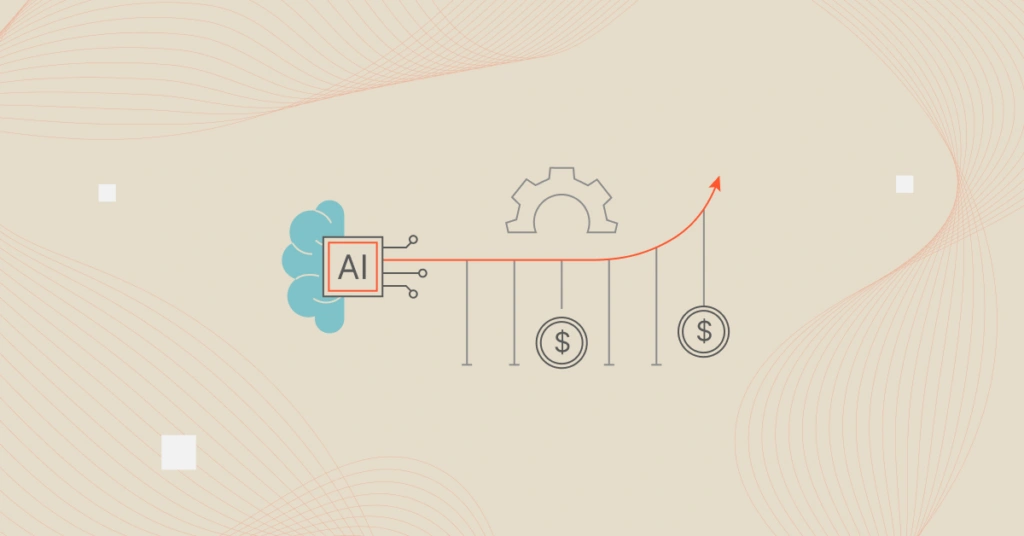For the past two years, AI enthusiasts have been treated to a nonstop procession of lightspeed innovations. ChatGPT rang the era in with a bang; millions of blogs, emails, trivia questions, and sonnets later, Microsoft etched the writing on the wall with its $10 billion investment in OpenAI, ChatGPT’s progenitor.
Since then, companies from Alphabet to Zoom have scrambled to somehow, some way, integrate AI into their core offerings.
Marketing technology (martech) is no exception. In addition to the general AI craze, the marketing industry as a whole faces pressure to do more with less. In the years before the pandemic, marketing budgets had hovered around 11% of overall company revenue; earlier this year, Gartner’s annual CMO Spend Survey revealed that marketing budgets had dropped to 7.7% of overall company revenue, down from 9.1% the previous year.
Reduced budgets don’t mean reduced pipeline expectations. Marketers must continue generating more pipeline every month, every quarter, every year. Before, they might have met rising expectations with new hires. Now, that’s not possible.
Faced with static headcount and the need to generate more pipeline than ever, marketers are turning to AI — and martech companies are rushing to meet this need.
How AI Has Transformed The Entire Sales Funnel
At the top of the sales funnel, marketers lean on platforms like 6sense, whose AI-powered platform analyzes tens of thousands of recent and historical intent signals to determine which accounts are the ripest for marketing and/or sales messaging.
Armed with that data, marketers use platforms like Clay to research those target accounts at scale and write personalized email copy for nurturing campaigns. Then products like Smartlead can send thousands of emails per day — more than any single rep could dream of producing on their own.
Once a target account enters the demo/proof-of-concept phase, companies use platforms like Gong to record and transcribe all interactions. These transcripts become GTM goldmines, helping companies refine a spectrum’s worth of intel: ideal customer profile (ICP), leaks in the sales funnel, habits of the most and least successful sellers, and more.
Finally, once deals wind up closed/won or closed/lost, companies can feed the full complement of verdicts into platforms like, you guessed it, ChatGPT for postmortem analysis. With effective prompting, companies can use ChatGPT to identify properties of the most and least successful deals, deepen their understanding of the competitive landscape, further refine their ICP, and develop strategies for optimizing the sales process.
Personalization at scale
Behold: a sales funnel wholly bolstered by AI, rendering clearer signals and deeper insights than GTM teams could generate manually. It’s no exaggeration to say that every MarTech outfit hoping for long-term relevance is preoccupied with incorporating AI into the core functions of their platforms.
But merely incorporating AI won’t be enough. In addition to budgetary challenges, marketers must also cut through more noise than ever to reach people more intensely fatigued to cold outreach than ever. The Holy Grail for modern marketers will be personalization at scale: generating a lot of volume without making recipients feel like they’re getting form letters.
As we surge into the AI age, the most successful platforms will be those that power personalization at scale. That includes:
- Generating messaging that feels more human and less robotic
- Helping reps decide which accounts to devote their finite creative energy to
- Surfacing information about specific recipients that reps can use to personalize messages
But At What Cost?
For now, the MarTech platforms with compelling AI offerings have gained a competitive edge. But in the very near future, AI empowerment will be a MarTech competitive necessity.
The good news: MarTech platforms have a golden opportunity to capture unprecedented volumes of demand. The bad news: It’s going to cost them.
Save the precious few exceptions who use on-premise hardware, companies overwhelmingly build AI solutions in the cloud. Those who manage it know all too well the challenges of preserving cloud cost efficiency: messy tagging, multi-cloud obscurity, shared/containerized cost murkiness, and engineering-finance communication challenges. In a SaaS world where only 39% of companies have a formalized cloud cost management (CCM) program in place, most — if not all — are about to get deluged by AI-driven cloud costs.
There was a time when all that mattered to the SaaS world was growth. Capital was cheap, SaaS was almost entirely greenfield, and the winners stood to make back seemingly any investment a hundred times over. Come 2022, 150,000 laid off workers could testify to the harsh reality that inefficient growth can be deadly.
The abrupt SaaS switch from growth-at-all-costs to efficient growth brought with it increased pressure to proactively manage cloud costs. For now, the MarTech companies elucidating intent signals, churning out emails, analyzing transcripts, and crunching numbers can classify their AI costs as R&D and celebrate their user growth. But the more users they capture, the more they push those costs over to OpEx, and the more accountable they’ll be for their AI features’ costs.
If they approach this inevitable shift passively, MarTech leaders risk building fatally unprofitable AI features and imperiling their jobs. But if they start managing their AI costs now, they give themselves a much better chance to build cost efficient AI features, develop fine-tuned pricing and packaging models, and to drive durable profits that fuel long-term success.
CloudZero helps the world’s most sophisticated MarTech architects stay efficient in the cloud. That includes platforms like Klaviyo, who uses CloudZero to dynamically manage their cloud margins, and Drift, who used CloudZero to shave $2.4 million off their annual cloud bill.
How? By addressing the problem at its root: CloudZero engages engineers in proactive cost management more successfully than any other CCM platform. 81% of companies link higher engineering engagement to better business outcomes, and CloudZero engages engineers like no one else.
Don’t wait for your AI costs to sink you. Stay ahead of the AI efficiency curve with proactive cloud efficiency.







